Intermediaries
Introduction
Merchants connected through an extensive trade network spanning the Indian Ocean linked the producers of the region to different markets and ultimately consumers. Given the distances involved, and the cultural, language, and practical barriers that had to be overcome, intermediaries played an essential role. Europeans interested in these markets thus also turned to them.
Golden Koban
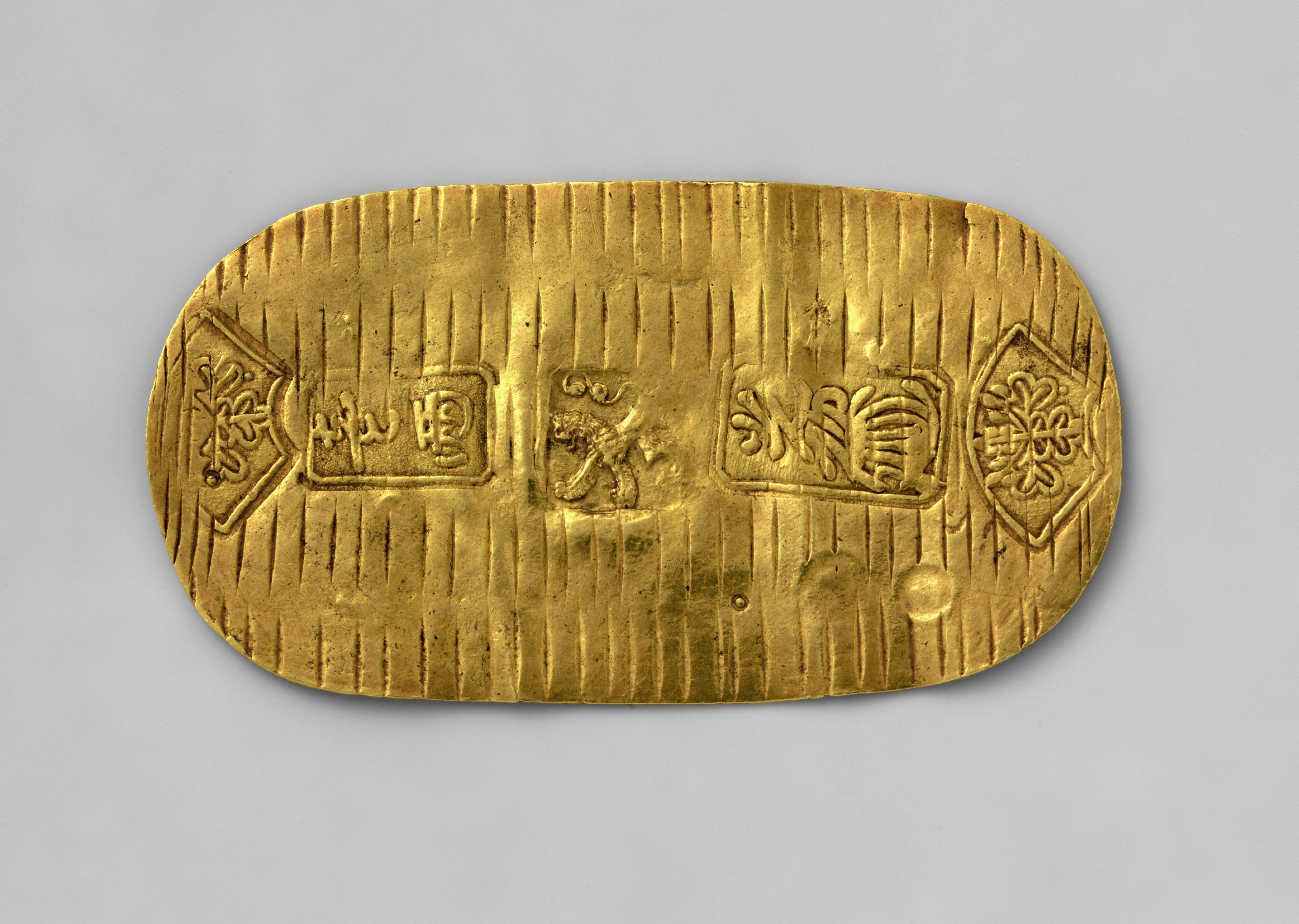
Japanese koban with a stamp (coat of arms of Holland) applied in Batavia, 1690. Rijksmuseum Amsterdam.
https://artsandculture.google.com/asset/gouden-kobang-koban-van-japan-met-op-midden-van-de-voorzijde-in-batavia-aangebrachte-instempeling-wapenschild-van-holland-anonymous/DgEXySJotEZ6dg?hl=nl
This golden koban coin from Japan illustrates the interwovenness of Asian and European commerce. The Dutch East India Company acquired it by exporting South and South-East Asian goods to Japan. Then stamped it with the seal of the province of Holland in Batavia (Jakarta). Coins like these were then often used to buy goods elsewhere in Asia.
Inhabitants Banda Islands
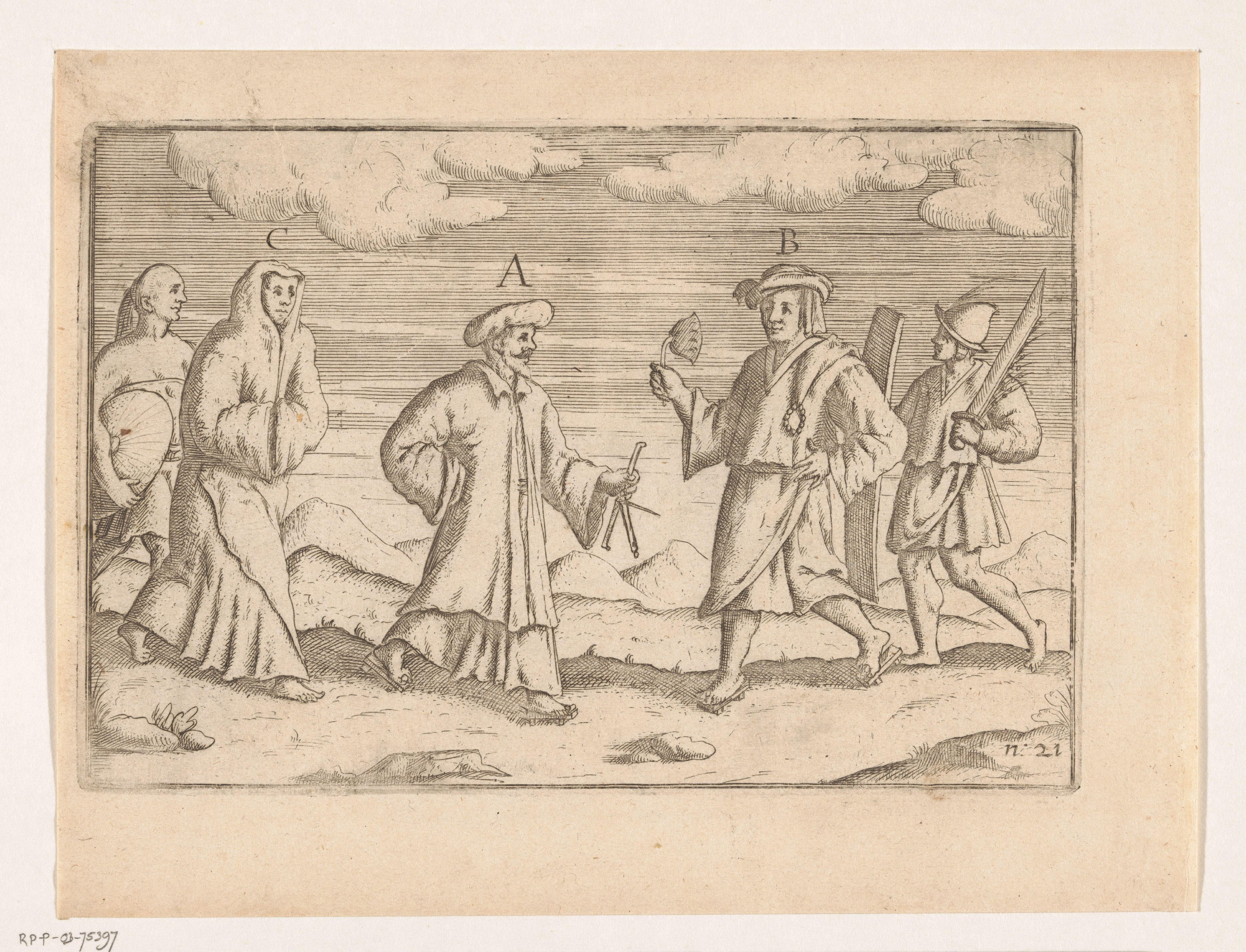
Inhabitants of the Banda Islands, 1599, print, anonymous, 1600-1601. Used in: Oost-Indische ende West-Indische voyagien, Michiel Colijn, Amsterdam 1619, Rijksmuseum Amsterdam,
http://hdl.handle.net/10934/RM0001.COLLECT.450073
This print depicts a Turkish merchant (A), a nobleman (B) with a soldier, and a noblewomen (C) with her slave in the Banda Islands, a group of small volcanic islands in Maluku (now eastern Indonesia). These islands were of great commercial interest because until the 19th century were the only place where the spices nutmeg and mace were produced. Around 1599, when this print was produced, the islands were visited by many different merchants from different parts of Asia. Over the course of the seventeenth century the Dutch East India Company however conquered them, brutally suppressed or annihilated its inhabitants, in order to establish a monopoly of the trade of these spices.
Banten
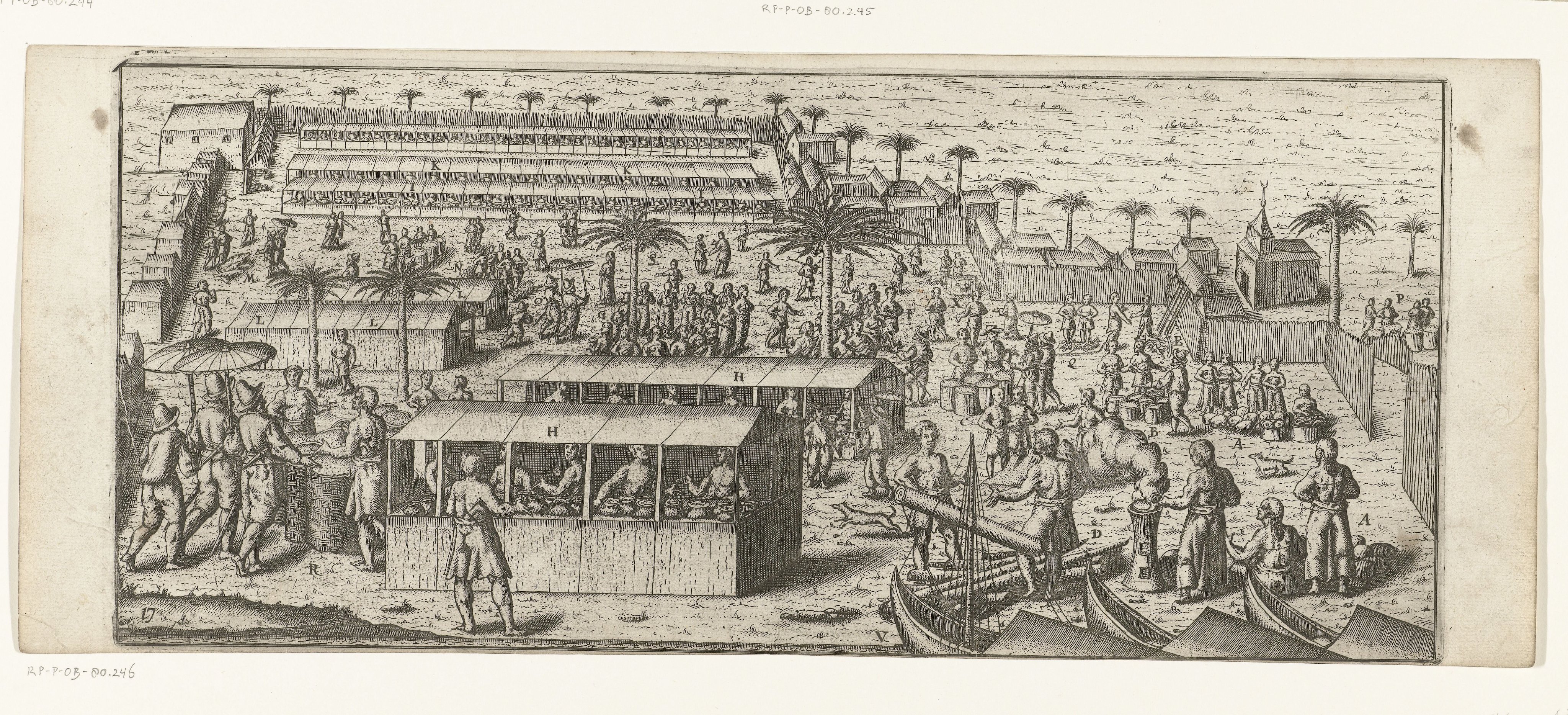
Bazaar van Bantam, print, anonymous, 1596. Used in: Willem Lodewijcksz, D'eerste boeck. Historie van Indien, waer inne verhaelt is de avontueren die de Hollandtsche schepen bejeghent zijn, Cornelis Claes, Amsterdam 1598. Rijksmuseum Amsterdam,
http://hdl.handle.net/10934/RM0001.COLLECT.449946
There are few images of market places in Asia in this period. This is a rare drawing of the market in Banten (Java, now Indonesia) from 1596. Banten was the most important port of the island at the time and was visited by Indian, Persian, and Chinese merchants. The print depicts these merchants, as well as a few Dutch ones, and the many stalls selling spices and other goods.
Oxen Cart
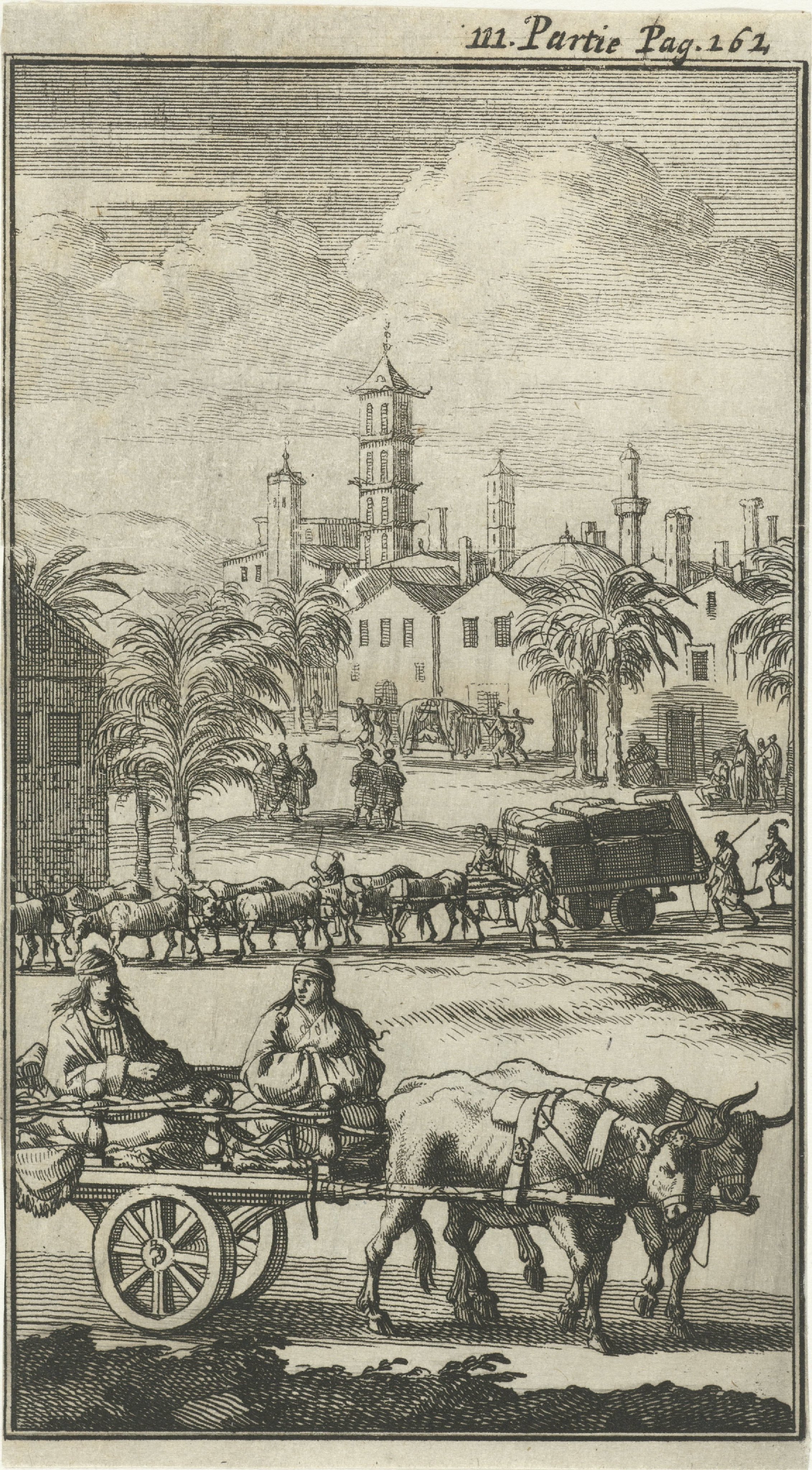
Oxen pulling a cart laden with goods, with an Indian city in the background, etching, Jan Luyken, 1689. Illustration from: Jean de Thevenot, Voyages Tant en Europe qu'en Asie et en Afrique, Paris: Charles Angot, 1689, dl. IV. Rijksmuseum Amsterdam, http://hdl.handle.net/10934/RM0001.COLLECT.143539
Goods were shipped in a variety of ways using land, river or sea transport. As with markets, however, few images of local transport in Asia from this period have survived. This rare print presents the uses of oxen carts to ship goods in the outskirts of an unspecified city in India.
Merchants
These three images were made for a European audience and depict some of the merchants that Europeans dealt with when trading in Asia.

A member of the Vaishya caste holding a bunch of bananas with his wife holding a betel leaf, gouache drawing, attributed to a painter from Tanjore (Thanjavur), ca. 1840. Wellcome Collection,https://wellcomecollection.org/works/y8v5e96k
This drawing from around 1840 depicts a couple belonging to the Hindu Vaishya caste in Pune (Maharashtra, India). Many of the merchants in India belonged to this group.
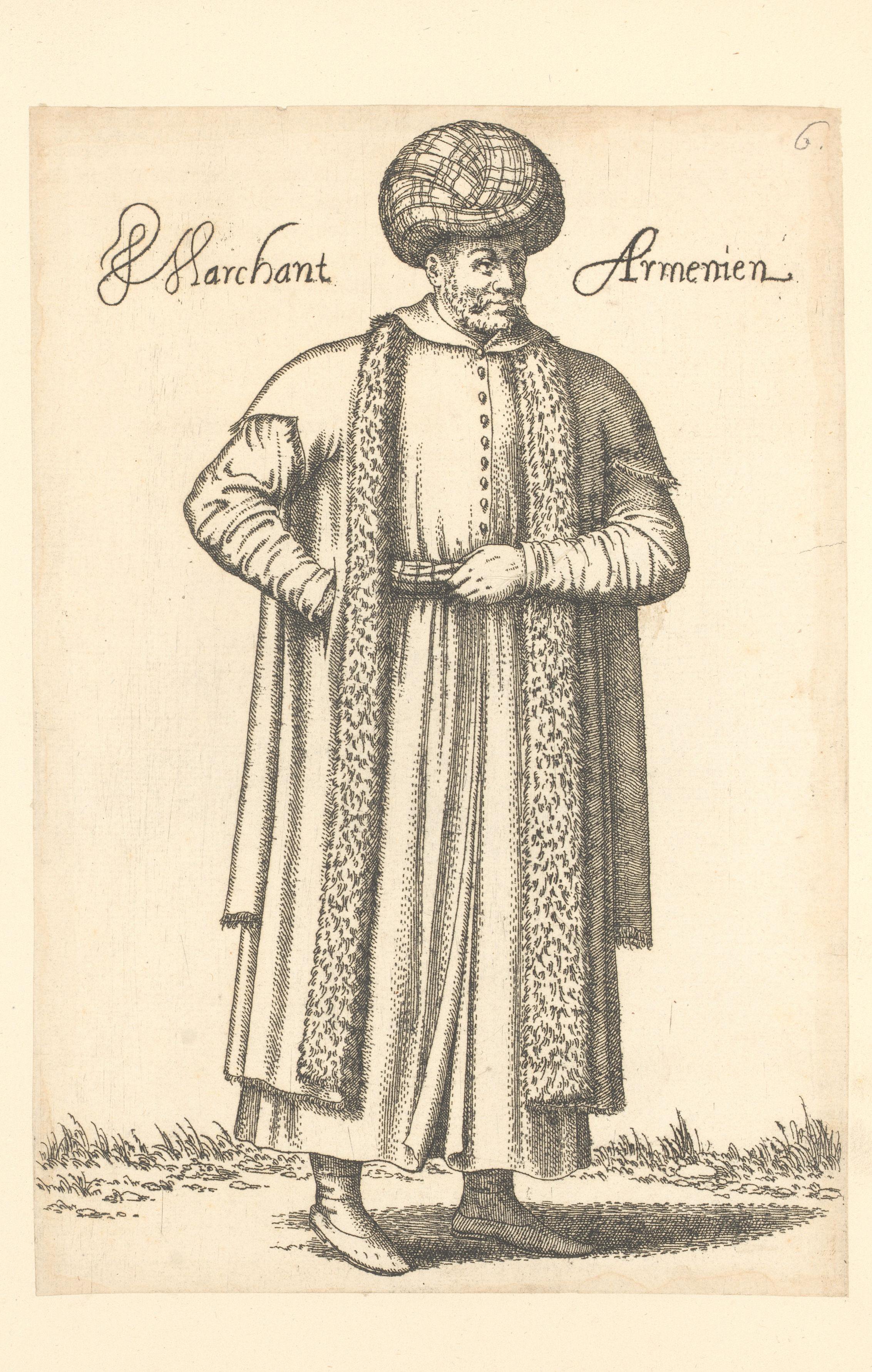
Marchant Armenien, print, Léon Davent, 1555-1568. Rijksmuseum Amsterdam. Print from: Nicolas de Nicolay, Les quatre premiers livres des navigations et pérégrinations orientales, de N. de Nicolay, (...) Avec les figures au naturel tant d'hommes que de femmes selon la diversité des nations, & de leur port, maintien & habitz, Lyon: Guillaume (I) Rouille, 1568. Rijksmuseum Amsterdam, https://id.rijksmuseum.nl/200759121
This drawing from the second half of the sixteenth century depicts an Armenian merchant. Armenians were important traders who operated across Eurasia in the early modern period, often mediating between Asian and European merchants.
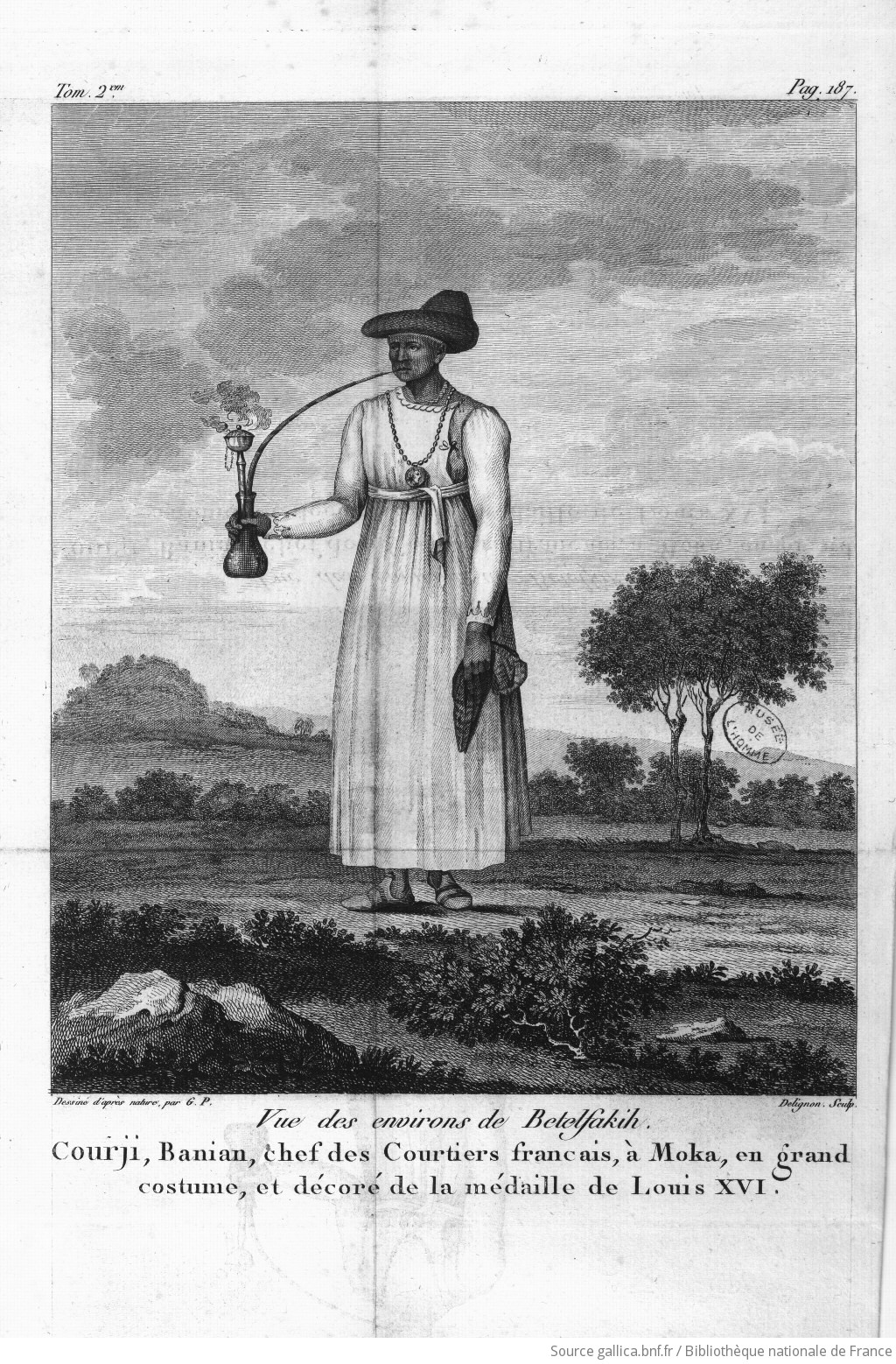
Courji, Banian, chef des Courtiers francais à Moka, en grand costume, et décoré de la médaulle de Louis XVI; print, Jakub Adam et al, 1800. Bibliothèque nationale de France. From: Illustrations de Voyage dans l'Inde et au Bengale, fait dans les années 1789 et 1790, contenant la description des îles Séchelles et de Trinquemalay... suivi d'un voyage fait dans la mer Rouge, contenant la description de Moka, Paris: 1800. BnF Gallica, https://gallica.bnf.fr/ark:/12148/btv1b2300079z/f6.item
This drawing from a French travel description depicts ‘Courji’, a Banian (Indian merchant), with the outskirts of Bayt al-Faqih (‘Betelfakih’) in the background. European merchants interested in buying Yemeni coffee relied on intermediaries in Mocha. This particular broker was so important to the French merchants in Mocha (Yemen) that Louis XIV is said to have awarded him with a medal.